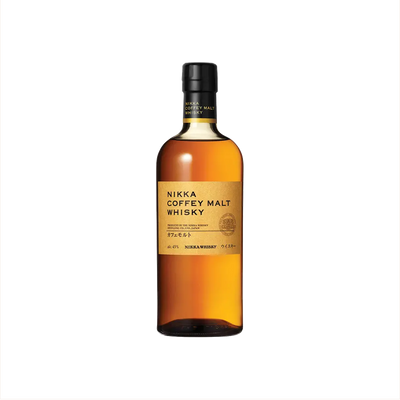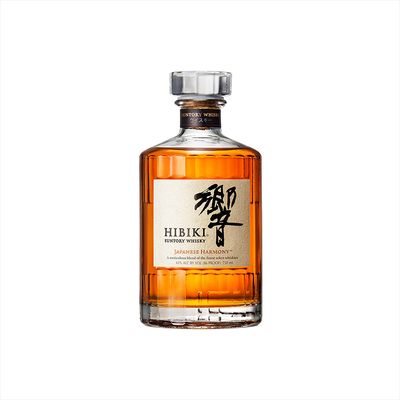Japanese Whisky
What is Japanese Whisky?
Japanese whisky is a distinctive style of whiskey that combines traditional Scottish distillation techniques with uniquely Japanese ingredients, water sources, and craftsmanship philosophies. What defines Japanese whisky goes beyond geography—it's characterized by the use of local water (often from mountain springs), Japanese oak (Mizunara) aging, and sometimes indigenous grains like Japanese rice alongside barley. The spirit typically showcases a delicate, refined profile that reflects the Japanese approach to precision and balance, often featuring subtle floral notes, gentle smoke, and a clean, elegant finish that sets it apart from other world whiskies.
Learn More About Japanese Whisky
What makes Japanese Whisky unique?
Japanese whisky stands apart through its obsessive attention to precision and seasonal variation, with distilleries often using Japan's distinct climate and pure mountain water sources to create remarkably clean, balanced spirits. The Japanese approach borrows techniques from Scottish whisky-making but adds their own innovations like using native Mizunara oak aging, which imparts distinctive spices and incense notes you won't find anywhere else. Most importantly, Japanese distillers typically produce multiple malt and grain styles in-house rather than trading between distilleries, giving master blenders complete control over their final product's character.
How is Japanese Whisky made?
Japanese whisky follows the Scottish model, using malted barley (and sometimes other grains) that's mashed, fermented with yeast, then distilled in copper pot stills before aging in oak barrels for a minimum of three years. What makes Japanese whisky distinct is the meticulous attention to water quality—distilleries often choose locations near pristine mountain springs—and the use of Japanese oak (Mizunara) alongside imported barrels, which imparts unique spicy and incense-like flavors. The country's varied climate, from Hokkaido's cold winters to Kyushu's humid summers, creates different maturation conditions that Japanese distillers skillfully blend to achieve their signature clean, balanced profiles.
How do you drink Japanese Whisky?
Japanese whisky shines brightest when sipped neat or with a splash of water, allowing you to appreciate its delicate balance and subtle complexity that sets it apart from Scottish or American styles. Many Japanese distillers actually recommend adding a few drops of soft water to open up the flavors, following the traditional mizuwari serving style that dilutes the spirit with ice and water. While Japanese whisky works beautifully in classic cocktails like Old Fashioneds and Whisky Highballs (especially popular in Japan), its refined character and often hefty price tag make it better suited for contemplative sipping rather than mixing into elaborate drinks.
How do I choose a good Japanese Whisky?
Start by considering your flavor preferences—if you enjoy Scotch whiskies, look for Japanese options from distilleries like Yamazaki or Hakushu that use similar production methods, while bourbon lovers might gravitate toward grain-forward bottles from Nikka's Coffey Still series. For cocktails, lighter expressions like Toki or Hibiki Harmony work beautifully in highballs and mixed drinks without overwhelming delicate flavors, whereas age-statement bottles deserve to be sipped neat or with just a splash of water to appreciate their complexity. Your budget matters too, as entry-level Japanese whiskies often provide excellent quality for mixing, while premium bottles should be reserved for special occasions when you can truly savor their craftsmanship.
Nutritional Information
Typical Calorie Range per Ounce: 64-70 calories
Typical Carbohydrate Range per Ounce: 0-0.1 grams
Typical Sugar Range per Ounce: 0 grams
Typically Gluten Free: No
Japanese whisky is distilled from grains including barley, corn, wheat, and rice. While the distillation process removes most proteins, including gluten, many Japanese whiskies contain wheat or barley-based spirits that may retain trace amounts of gluten. Some sensitive individuals report reactions to grain-based spirits. For those with celiac disease or severe gluten sensitivity, always check the specific product information and consult with the distillery directly to confirm gluten-free status before consuming.
Scrolled this far? Your reward? Japanese Whisky Trivia!
- Japanese distilleries import Scottish peat bog water by the tanker load. Some premium Japanese whiskies get their smoky character from actual Highland peat that's shipped thousands of miles across the ocean. Chichibu Distillery has used Islay peat, while others source from Speyside regions. It's like flying in Italian tomatoes for your pizza sauce – authentic flavor knows no borders.
- The founder of Japanese whisky failed his chemistry degree twice before creating an empire. Masataka Taketsuru flunked out of university chemistry courses in Japan, so his family sent him to Scotland in 1918 to learn whisky-making as a backup plan. He ended up marrying a Scottish woman, smuggling whisky recipes back to Japan in her recipe notebook, and founding what became Nikka Whisky. Sometimes the best career moves look like disasters at first.
- Japanese whisky makers use a bamboo charcoal filtering technique called "mizunara magic." Before bottling, some distilleries filter their whisky through layers of activated bamboo charcoal, which removes harsh compounds while adding subtle sweetness. This ancient Japanese purification method, traditionally used for sake and water, gives the whisky an impossibly smooth finish that Scottish distillers are now trying to replicate.
- Yamazaki Distillery sits on a fault line that naturally carbonates their water. The geological activity beneath Japan's oldest whisky distillery creates naturally effervescent spring water with perfect mineral content for whisky production. The micro-earthquakes actually help age the whisky faster by constantly agitating the barrels. Mother Nature provides both the water and the mechanical aging process.
- Japanese distilleries grow their own oak trees specifically for barrel aging. Suntory planted entire forests of mizunara oak in the 1960s, knowing they wouldn't be ready to harvest for whisky barrels until the 2020s. These trees must be at least 200 years old before they're suitable for coopering, making this the longest investment timeline in the spirits industry. Talk about playing the long game.
Higher-proof spirits can be intense. Mix carefully, taste thoughtfully, and enjoy responsibly.
Gift message (optional)






